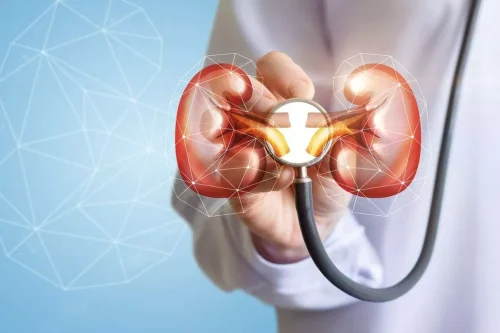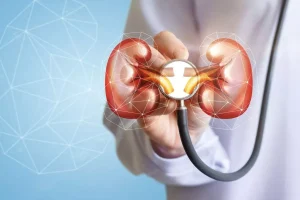
The psychiatric perspective that alcohol misuse and co-occurring anxiety represent neurobiologically distinct diagnostic conditions has dominated the field for many decades. However, recent research provides increasing support for the neuroscientific perspective that these conditions share underlying, mutually exacerbating, neurobiological processes. There is ample evidence on the comorbidity of problematic alcohol use and depression (Boden & Fergusson, 2011; Di Florio et al., 2014; Kessler et al., 2003; Kushner et al., 2000; Martins & Gorelick, 2011; Petersen et al., 2019; Schuckit, 2006; Udo & Grilo, 2019).

Causes and effects of co-occurrence

Because he is a member of a support group that stresses the importance of anonymity at the public level, he does not use his photograph or his real name on this website. Maltreatment during childhood—emotional, sexual, or physical abuse or neglect—can have long-lasting effects, resulting in a significant percentage of all adult psychopathology. Researchers have found that alcohol takes a psychological and physiological toll on the body and may actually compound the effects of stress. The present study opted for a correlational and cross-sectional design, with a convenience sampling technique.
Study progress and preliminary feasibility data
In one study, researchers administered paroxetine or placebo in a double-blind fashion to participants who had AUD and social anxiety disorder.25 They found that although the medication was clinically effective in reducing social anxiety symptoms, alcohol use severity was unchanged. A substantial number of people who have problems with alcohol also experience strong anxiety and mood problems. This article provides an overview of the evolving perspectives of this association in the context of three related disciplines—psychiatry, psychology, and neuroscience. Psychiatric and epidemiological studies show that having either an anxiety- or alcohol-related diagnosis elevates the prospective risk for developing the other disorder. From the psychological perspective, behavioral research demonstrates that drinking to cope with negative affect is a potent marker for current and future problems with alcohol. Neuroscientific research implicates overlapping neurobiological systems and psychological processes in promoting the rise of negative affect and alcohol misuse.
Study design
- Over time, this maladaptive coping mechanism leads to higher tolerance levels and increased alcohol intake.
- Accuracy in prevalence estimates of comorbid anxiety and AUDs is essential for gauging the magnitude of the clinical and social impact of this comorbidity; therefore, data should be carefully selected with attention to sampling methods.
- To date, rigorous empirical evaluation of the common-factor model has been limited, and publications directly addressing this topic are sparse.
- Information derived from clinical samples, although enlightening in its own right, produces inflated approximations of the prevalence of comorbidity (Kushner et al. 2008; Regier et al. 1990; Ross 1995).
Finally, neurobiological research on the relationship between negative affect and alcohol use is reviewed, and the opponent process model is explained. The concluding section synthesizes the discipline-specific research to identify conclusions and unanswered questions about the connections between alcohol use and negative affect. A key challenge to applying a comparative perspective across disciplines and time is the use of unique and evolving terminology and definitions for similar phenomena. Terms such as anxiety, anxiety disorder, depression, mood disorder, tension, stress, stress disorder, and negative affect are used differently across disciplines and time. The relationships among these constructs can be conceptualized as a Venn diagram, with the shared spaces representing overlapping constructs. In these overlapping spaces, the greatest opportunities for integration across disciplines can be found.

Previous trials have evaluated buspirone among patients with comorbid generalized anxiety disorder (or anxiety symptoms) and AUDs. The majority of these studies have found reductions in both anxiety and alcohol outcome measures, including cravings (Bruno 1989; Tollefson et al. 1991) and drinking measures (Kranzler et al. 1994). However, one study found no effect of buspirone on either anxiety or alcohol use (Malcolm et al. 1992). Similar to the common-factor and self-medication hypotheses, the literature underpinning the substance-induced pathway to comorbid anxiety and AUDs is convincing but cannot account for the findings consistent with the other causal models. It also is important to note that reliance on timeframes, although useful, could mask an independent course of anxiety symptoms among individuals who also have an AUD. For example, it is possible that an anxiety disorder which appears at a time when the person is experiencing alcohol-related problems may have an etiology separate from alcohol use.
Social anxiety and alcohol-related impairment: The mediational impact of solitary drinking
- This can result in feelings of anxiety and depression along with other hangover symptoms.
- Researchers have found that alcohol takes a psychological and physiological toll on the body and may actually compound the effects of stress.
- Since there is evidence that participants balance the speed-accuracy trade-off differently 95, the dependent measure of the go/nogo task is the balanced integration score (BIS).
- So it’s important that you answer any questions in the application process honestly and correctly, and to the best of your knowledge.
- This predictive capacity is maintained for consumption in women aged 35–64 years during lockdown, which indicates the consistency of both variables as predictors of problematic alcohol consumption.
Over time, consuming too much alcohol can lead to blackouts, loss of memory, and even brain damage (especially if it causes other health problems, such as liver Women and Alcoholism damage). Occasionally unwinding with alcohol isn’t necessarily dangerous if your doctor approves. But once you start drinking, you can build a tolerance to the de-stressing effects of alcohol.
Effects of Alcohol Use
- The reported rates of self-medication in clinical samples of people with both types of disorders have ranged from 50 to 97 percent, with the highest rates among people with phobias (Bibb and Chambless 1986; Smail et al. 1984; Thomas et al. 2003; Turner et al. 1986).
- Alcohol-related shrinkage of the hippocampus has been documented in numerous studies, with findings showing that heavy drinkers are at a higher risk of developing persistent sadness, memory loss, and cognitive decline.
- However, anxiety for several days may also indicate someone has an anxiety disorder.
- Dr. Schneekloth conducts research in the field of addiction psychiatry, particularly alcoholism research and transplant psychiatry.
- Anxiety sensitivity also has been linked to the incidence of both anxiety and substance use disorders (DeHaas et al. 2001; DeMartini and Carey 2011; Schmidt et al. 2007).
The advantage of a saliva-based measure of SNS activity is the convenience of assessing activity of both major stress systems (i.e. SNS and HPA-axis) in a single test tube, without the need for technically sophisticated instrumentation 63. The present and ongoing study aims to fill this research gap by conducting an experimental laboratory design to investigate the underlying mechanisms of the association between stress and alcohol consumption (MESA) in the at-risk population of young men. Since these mechanisms are expected to differ depending on the stage of alcohol use, they are examined in regular and risky drinkers.

It has been estimated that nearly 1 in every 10 Americans has attended at least one AA meeting, and it is “the most frequently consulted source of help for drinking problems” (McCrady and Miller 1993, p. 3). One potential explanation for these findings is that the reasons for using alcohol may differ by gender. For example, women may be more prone than men to self-medicate for mood problems with substances such as alcohol (Brady and Randall 1999). Furthermore, empirical inspection of gender differences in stress-related drinking has shown that women report higher levels of stress and have a stronger link between stress and drinking (Rice and Van Arsdale 2010; Timko et al. 2005).